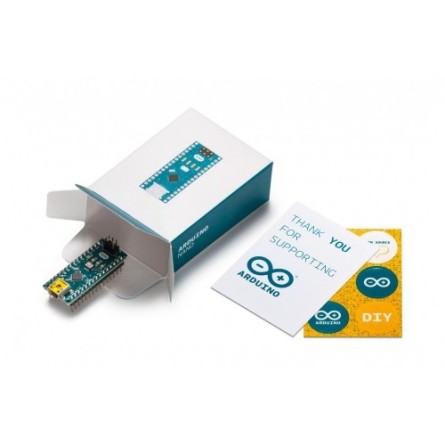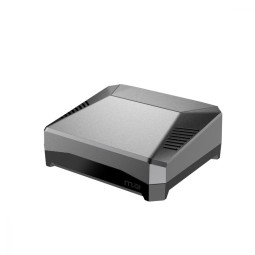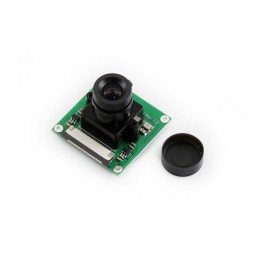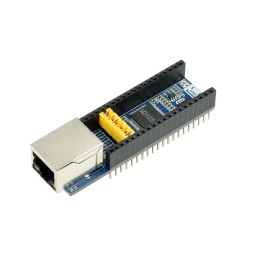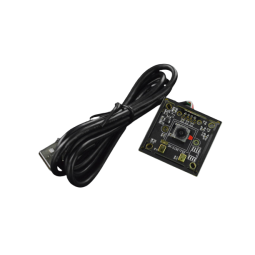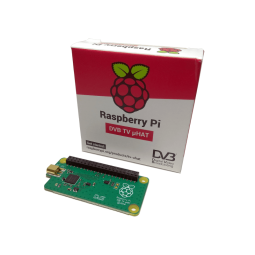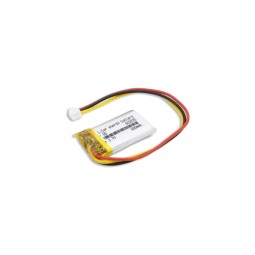- On sale!
Arduino Nano
-
TheArduino Nano is a 16MHz ATmega328 based board, similar to theArduino Duemilanove in a compact format (Arduino Nano 3.x)
-
I/O pins and DIL30-compatible circuitry: designed for embedded systems or for applications requiring multitasking
-
Outputs via male connectors that fit most connectors: makes testing and new projects easy!
-
Mini-USB connector for powering the board and circuit board and transferring new programs to the controller
Features
-
ATmega328 microcontroller
-
AVR architecture
-
32 KB flash memory including 2 KB used by the bootloader
-
SRAM 2 KB
-
EEPROM 1 KB
-
Clock speed 16 MHz
-
Analog input pins 8
-
Operating voltage 5 V
-
Input voltage 7-12V
-
DC current per I/O pin 40 mA (I/O pins)
-
Digital I/O pins 22 (6 of which are PWM)
-
PWM outputs 6
-
Power consumption 19 mA
-
Dimensions: 18 x 45 mm
-
Weight: 7 g
Pinout

Power supply
TheArduino Nano can be powered via the USB Mini-B connection, an external unregulated 6-20 V power supply (pin 30) or an external regulated 5 V power supply (pin 27). The power source is automatically selected to the highest voltage source.
Input and output
Each of the Nano's 14 digital pins can be used as input or output using the pinMode (), digitalWrite () and digitalRead () functions. They operate at 5 volts. Each pin can supply or receive a maximum of 40 mA and has an internal pull-up resistor (disconnected by default) of 20 to 50. In addition, some pins have specialized functions:
- Serial: 0 (RX) and 1 (TX). Used to receive (RX) and transmit (TX) TTL serial data. These pins are connected to the corresponding pins of the FTDI USB-to-TTL serial chip.
- External Interrupts: 2 and 3. These pins can be configured to trigger an interrupt on a low value, a rising or falling edge, or a value change. See the attachInterrupt () function for details.
- PWM: 3, 5, 6, 9, 10 and 11. Provide an 8-bit PWM output with the analogWrite () function.
- SPI: 10 (SS), 11 (MOSI), 12 (MISO), 13 (SCK). These pins support SPI communication, which, although provided by the underlying hardware, is not currently included in the language Arduino.
LED: 13. There is a built-in LED connected to digital pin 13. When the pin is HIGH, the LED is lit, when the pin is LOW, it is off.
The Nano has 8 analog inputs, each providing 10 bits of resolution (i.e. 1024 different values). By default, they measure from ground to 5 volts, but is it possible to change the upper end of their range using the analogReference () function. Analog pins 6 and 7 cannot be used as digital pins. In addition, some pins have specialized features:
I2C: A4 (SDA) and A5 (SCL). Supports I2C (TWI) communication using the Wire library (documentation on the wiring website).
There are some other pins on the board:
- AREF. Reference voltage for the analog inputs. Used with analogReference.
- Reset. Bring this line LOW to reset the microcontroller. Typically used to add a reset button to shields that block the one on the board.
Communication
TheArduino Nano has a number of facilities to communicate with a computer, another Arduino or other microcontrollers. The ATmega328 provides TTL (5V) UART serial communication, which is available on digital pins 0 (RX) and 1 (TX). An FTDI FT232RL on the board channels this serial communication via USB and the FTDI drivers (included with the Arduino software) provide a virtual communication port to the computer software. The Arduino software includes a serial monitor that allows simple text data to be sent to and from the Arduino board. The RX and TX LEDs on the card flash when data is transmitted via the FTDI chip and the USB connection to the computer (but not for serial communication on pins 0 and 1). A SoftwareSerial library allows serial communication on any of the Nano's digital pins. The ATmega328 also supports I2C (TWI) and SPI communication. The Arduino software includes a Wire library to simplify the use of the I2C bus. To use SPI communication, please refer to the ATmega328 data sheet.
Automatic reset (software)
Instead of pressing the reset button before a download, theArduino Nano is designed to be reset by software running on a connected computer. One of the FT232RL's hardware flow control (DTR) lines is connected to the ATmega328's reset line via a 100 nanofarad capacitor. When this line is asserted (low tap), the reset line drops long enough to reset the chip. The Arduino software uses this capability to allow you to download code by simply pressing the download button in the Arduino environment. This means that the bootloader can have a shorter timeout, as the lowering of the DTR can be well coordinated with the start of the download. This configuration has other implications. When the Nano is connected to a computer running Mac OS X or Linux, it resets whenever a connection is made to it from software (via USB). For about half a second, the bootloader runs on the Nano. Although it is programmed to ignore malformed data (i.e. anything other than a new code download), it will intercept the first few bytes of data sent to the board after a connection is opened. If a sketch running on the board receives a unique configuration or other data when it first starts up, make sure that the software it is communicating with waits one second after the connection is opened and before sending that data.
Programming
To program with Arduino, you can use the open-source software platforms ofArduino:
- or theWEB EDITOR.
Data sheet
- Category
- Microcontrollers
- Brand
- Arduino
- Compatibility
- Arduino
- Connectivity
- 8 pins*~6 PWM Output
- Type of storage
- Flash memory: 32 KB including 2 KB used by the bootloader*~SRAM: 2 KB*~EEPROM: 1KB
- Random Access Memory (RAM)
- 2 KB SRAM
- Wi-Fi
- No
- Bluetooth
- No
- Power supply
- 19 mA*~DC current per I/O pin 40 mA
- Dimensions
- 18 x 45mm
- Weight
- 7g
- Type of product
- Cards & Systems
Customers who bought this product also bought:
Questions (0)
No customer questions for the moment.


 Français
Français
 Español
Español
 Italiano
Italiano
 Deutsch
Deutsch
 Portugais
Portugais
